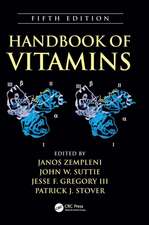Cognitive Aspects of Skilled Typewriting
Editat de W. E. Cooperen Limba Engleză Paperback – 21 dec 2011
Preț: 376.22 lei
Preț vechi: 396.02 lei
-5% Nou
Puncte Express: 564
Preț estimativ în valută:
72.02€ • 75.15$ • 60.37£
72.02€ • 75.15$ • 60.37£
Carte tipărită la comandă
Livrare economică 12-26 martie
Preluare comenzi: 021 569.72.76
Specificații
ISBN-13: 9781461254720
ISBN-10: 1461254728
Pagini: 432
Ilustrații: XII, 417 p.
Dimensiuni: 155 x 235 x 23 mm
Greutate: 0.6 kg
Ediția:Softcover reprint of the original 1st ed. 1983
Editura: Springer
Colecția Springer
Locul publicării:New York, NY, United States
ISBN-10: 1461254728
Pagini: 432
Ilustrații: XII, 417 p.
Dimensiuni: 155 x 235 x 23 mm
Greutate: 0.6 kg
Ediția:Softcover reprint of the original 1st ed. 1983
Editura: Springer
Colecția Springer
Locul publicării:New York, NY, United States
Public țintă
ResearchCuprins
Early History of the Typewriter.- Methods of Typewriting and Keyboard Arrangements.- The Psychology of Typewriting.- Feedback Systems.- Learning to Type.- Retention of Skilled Typing.- Domain of Planning.- Different Input Modes.- Different Output Modes.- Conclusion.- 2. A Glossary of Terms Including a Classification of Typing Errors.- Basic Terms.- Terminology for Letter Sequences.- Specification of Hand, Finger, and Position: The [H,F,P] Triple.- Terminology for Errors.- 3. Studies of Typing from the LNR Research Group.- Studies of Typing: An Overview.- Some Basic Phenomena.- A Cooperative Algorithm Simulation Model of Typing.- 4. A Comparison of Skilled and Novice Performance in Discontinuous Typing.- Experiment 1.- Experiment 2.- General Discussion.- 5. Keystroke Timing in Transcription Typing.- Method.- Development of Typing Skill.- Variability in Skilled Typing.- Models of Keystroke Timing.- Discussion.- 6. Error Patterns in Novice and Skilled Transcription Typing.- The Lessenberry Confusion Matrix.- Novice and Expert Confusion Matrices.- The Development of Skilled Typing.- Summary.- 7. Skilled Typing: A Characterization Based on the Distribution of Times Between Responses.- Characterizing Individual Differences.- Characterizing Skill Acquisition.- Characterizing the Effect of a Task Variable.- Characterizing the Effect of a Motivational Variable.- Bringing Fluency Under Experimental Control.- Overall Discussion and Conclusion.- 8. Time, Information, and the Various Spans in Typewriting.- Span Data.- Theoretical Issues.- Concluding Remarks.- 9. Determinants of Interkey Times in Typing.- Hand Movements.- Word Length.- Delayed Response.- Typing Sentences.- Longer Words.- Single-Word Strategies.- General Discussion.- 10. Mirror-Image Movements in Typing.- Method.- Results and Discussion.- 11. Actively Learning To Use a Word Processor.- Method and Overview.- Learning by Thinking.- Learning in an Exploratory Environment.- Finale: Active Learning.- 12. Knowledge of Word Frequency as an Aid for Text Editing.- Case 1.- Case 2.- Case 3.- Case 4.- Summary.- 13. Certain Problems Associated with the Design of Input Keyboards for Japanese Writing.- Japanese Writing System.- Typewriting in Japan.- Various Typing Methods for Japanese Writing.- Ergonomic Aspects of Various Tasks and Touch Typing.- Touch Typing Viewed as a Choice Versus Reaction Time Paradigm.- Some Two-Stroke Touch-Typing Systems.- Psychophysiological Evaluation of Touch Typing..- Coding of Kanzis Based on Linguistic and Graphic Structures.- Sound-Based Codes May Not Be Optimal.- Association Codes and Interference With Pattern Typing.- Kana-to-Kanzi Conversion and Inetractive Typing.- Possible Hemispheric Lateralization of Cerebral Functions in Typing.- Toward the Best Method of Copy Typing for Professionals.- Code Array Representation for Two-Stroke Codes.- Evaluation of Codes Based on Hand and Finger Motions.- Some Examples Optimized for Hand and Finger Motions.- Educational Aspects.- Concluding Remarks.- Author Index.










